When it’s cold and snowing, we all miss the color and warmth of summer gardens. While you can’t change the weather, you can make sure your winter landscape still catches your eye.
How?
By choosing shrubs and trees with striking bark and branches, winter fruit, early flowers, and attractive deciduous forms!
When leaves are off the branches, these characteristics are on full display.
How to Think About Winter Gardens
One advantage to including plants with attractive winter characteristics is that you start to see your garden as a year-round place and not just an outdoor summer room.
Flowering shrubs and trees with riotous summer growth are also beautiful in winter, but for different reasons. Like the season itself, winter gardens are quiet and pared down.
You might think snow-covered gardens are bleak, but that same blanket of snow can enhance the appearance of winter grasses, shrubs, and trees by becoming a neutral canvas that highlights their winter colors and forms. A snowy backdrop also highlights the winter wildlife that visits your garden.
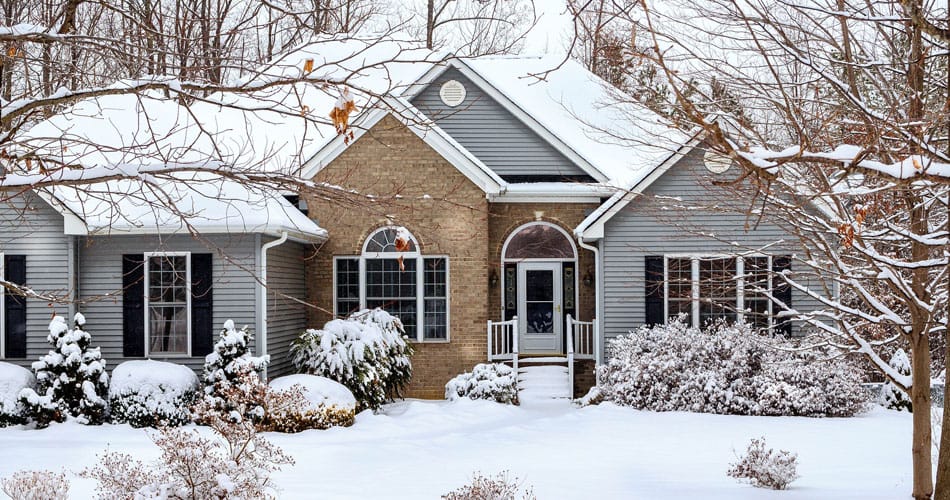
Along with evergreens, plants that have both summer and winter interest make a framework for your garden, holding its composition together while other seasonal plants come and go.
Winter is Part of Your Year-Round Garden
Your plant choices can cover the seasons so that you have:
- Early-flowering bulbs that are overtaken by
- Spring- and summer-flowering perennials
- Fall foliage colors followed by
- Winter berries, seed heads, and early flowering branches.
When combined with evergreens, you’ll have a rich mix of color and texture, as well as year-round wildlife visitors. Who doesn’t want to give songbirds some winter shelter and food?
Winter Landscape Ideas
An evergreen backdrop always offers a nice contrast for spring- and summer-flowering trees and shrubs, and it’s also a striking juxtaposition for winter branches and early-flowering shrubs.
Here are some of my favorite showy winter species to bring interest to your yard (and they all look great with an evergreen backdrop!):
Paperbark Maple
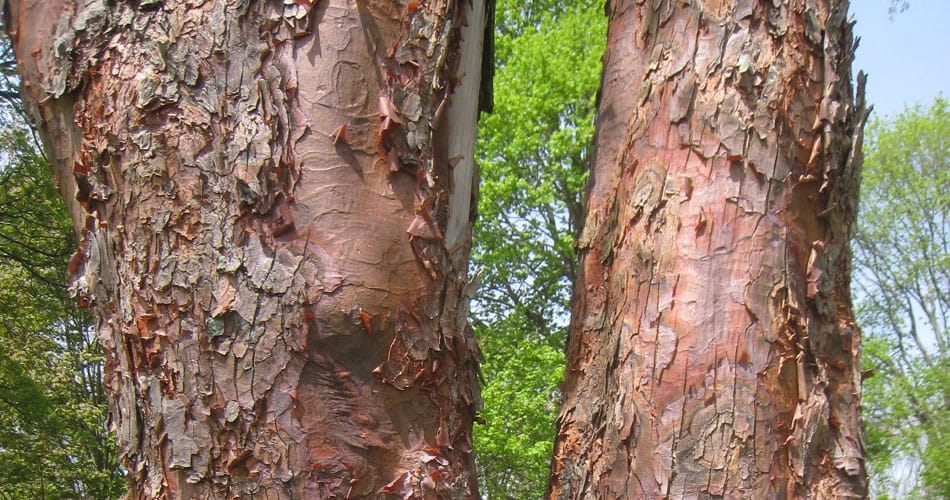
Paperbark maples have a distinctive peeling bark
The paperbark maple, Acer griseum, has striking features all year round but the one feature that truly stands out in winter is its bark. Paperbark maple is a medium-size tree with a tidy, oval form or a wider-spreading, multi-trunk shape. It’s good as a specimen tree or for small gardens. Other eye-catching characteristics include:
- Large, winged seeds (samaras)
- Dark green, three-lobed leaves
- Bright red fall foliage color
- Striking curls of peeling, cinnamon-colored bark that show best in winter after leaves have fallen.
The paperbark maple is susceptible to the same pests and diseases as other maple species, such as anthracnose and verticillium, so maintain good soil drainage, add mulch, and prune correctly.
Cornelian Cherry
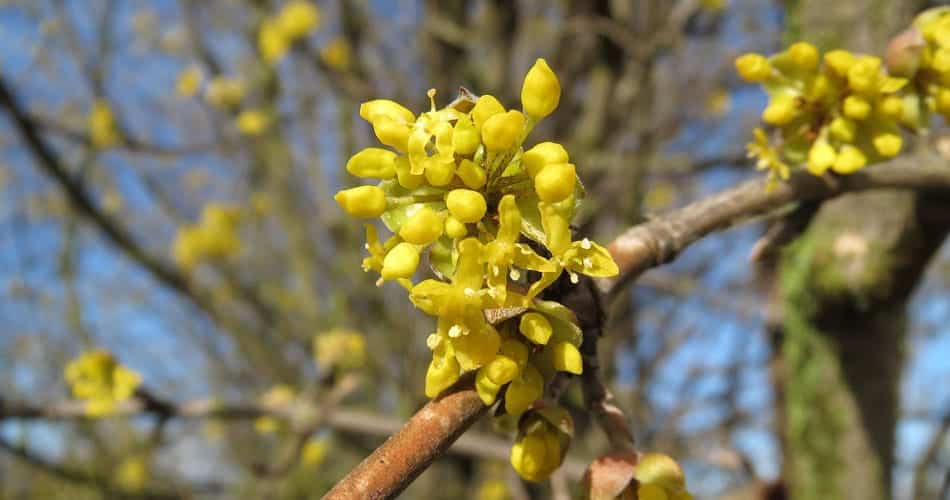
Yellow cornelian cherry flowers bloom on bare branches and provide color during the winter
Cornelian cherry (Cornus mas) is a large shrub or small tree (to 25’ tall and 20’ wide) dogwood species with winter interest. Its characteristics include:
- Winter flowers that are yellow and bloom in clusters on bare branches
- Platy, flaking gray bark
- A large, shrubby form that makes an excellent hedge or specimen
- Dark, carnelian-red fruits in summer that attract birds
- Red fall leaf color
The cultivar ‘Golden Glory’ has a smaller, upright form that reaches 15’. Cornus mas has good resistance to anthracnose and dogwood borer. Just make sure you have provided well-draining soil, and don’t forget to mulch!
Amur Chokecherry
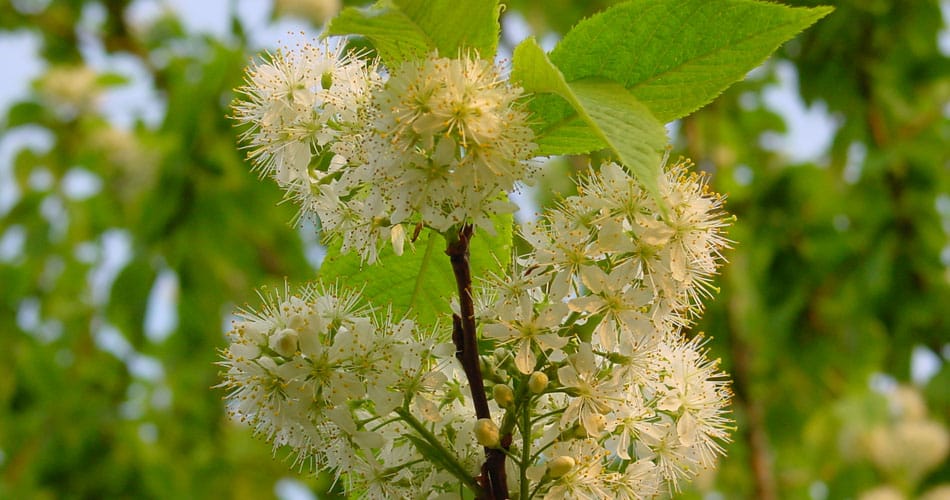
Amur chokecherry white flowers appear in the spring and provide fragrance for your yard
The Amur chokecherry, Prunus maackii, is one of winter’s most striking trees. It will reach a size of 30’, with an almost equal spread. While it’s a beautiful tree all year round, winter shows off its best feature: its russet-colored, satiny bark.
- Clusters of fragrant white flowers appear in spring, attracting pollinators
- Late-summer fruit are a glossy black, are used for jam and jelly, and attract birds
- Deciduous leaves expose the tree’s branching pattern as well as its smooth bark
Because it’s a cherry, the trunk and branches have showy lenticels, those recognizable raised pores that pattern the bark of the cherry genus. And because it’s native to cold regions, excessive heat can stress the tree. You should maintain a mulch layer around the trunk base to moderate soil temperatures.
Witch Hazel
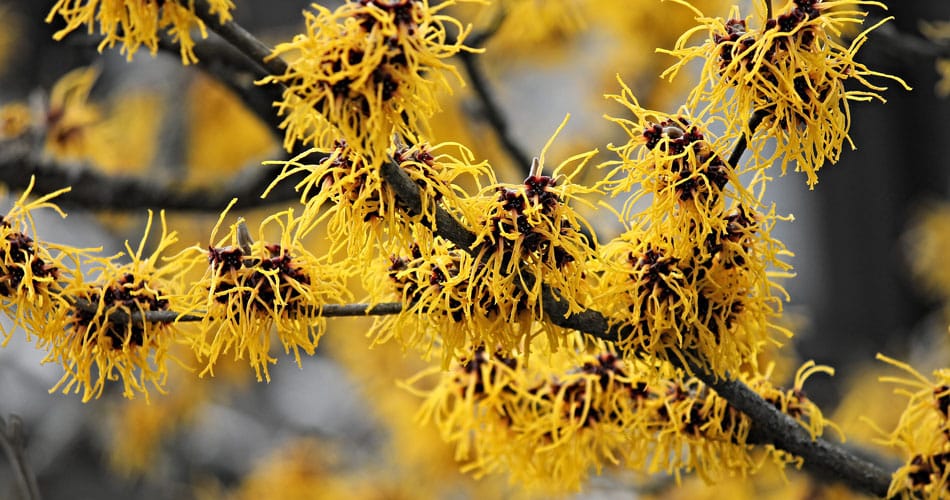
Witch hazel flowers are available in a variety of colors
Colorful witch hazel cultivars (Hammalis x intermedia) are another winter highlight. Witch hazel forms a large shrub or small tree 10’ to 15’ high, with spreading branches that display gold to red fall color, followed by late winter or early spring blooms.
- An excellent woodland or border specimen
- Flowers are fragrant, and recognizable by their ribbon-strips of petals that bloom on bare branches
Cultivars have a range of flower colors:
- ‘Arnold Promise’ makes bright yellow flowers
- ‘Copper Beauty’ has copper-orange blooms
- ‘Ruby Glow’ has deep, copper-red flowers on a vase-shaped plant
Witch hazel is a tough plant but prefers consistent soil moisture to prevent leaf scorch. Witch hazels like acidic soil, but will tolerate a range of soil types, including clay. Keep base suckers pruned back, especially when they appear below the graft line. As with other early flowering species, prune after flowering but before leaves have emerged.
Winter Rewards
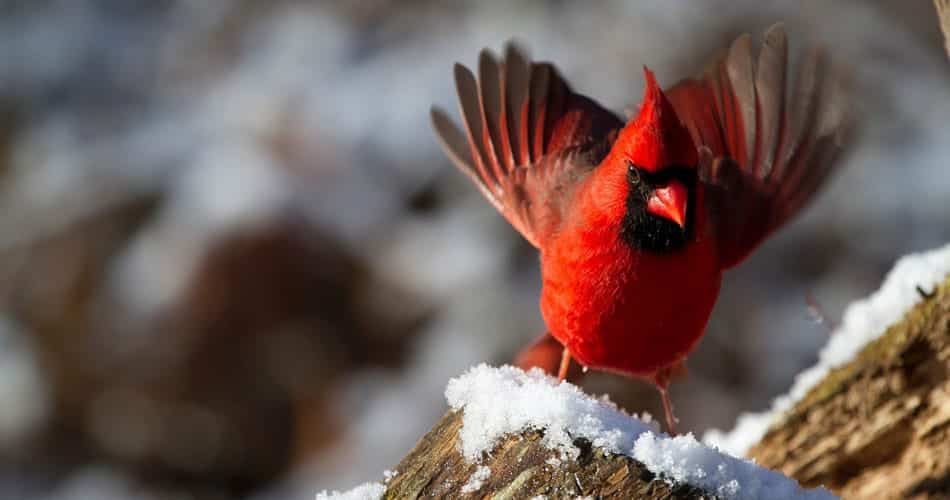
Plants and trees that you choose can attract birds, like this Northern cardinal, to your New Jersey or Pennsylvania yard during the winter months
While you may prefer to view your garden from indoors during the winter cold, these and other winter-interest plants will enliven your view and reward birds and wildlife with fruits and seeds.
If you’re not sure what to plant, or where, we can help. Our expert staff can help you with tree and shrub selections and we can ensure their ongoing health, too.
GET THE LATEST NEWS
Subscribe to the Organic Plant Care Newsletter and get timely and helpful tips and updates monthly.
There's no spam - we promise!





